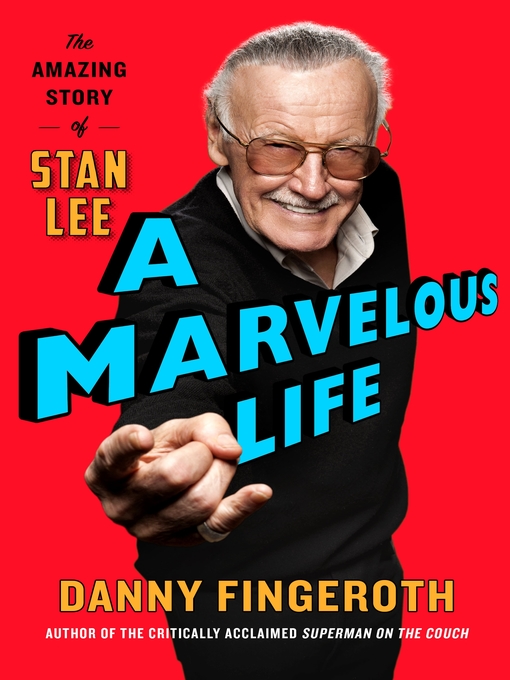The definitive biography of the beloved—often controversial—co-creator of many legendary superheroes, A Marvelous Life: The Amazing Story of Stan Lee presents the origin of "Stan the Man," who spun a storytelling web of comic book heroic adventures into a pop culture phenomenon: the Marvel Universe.
"[Fingeroth's] intimate yet balanced account, highlights Lee's humanity, humor and even humility. But it doesn't ignore how his canny self-promotion at times shortchanged his collaborators and constrained his own choices." —Wall Street Journal
Stan Lee was the most famous American comic book creator who ever lived.
Thanks, especially, to his many cameos in Marvel movies and TV shows, Lee was—and even after his 2018 death, still is—the voice and face of comics and popular culture in general, and Marvel Comics in particular. How he got to that place is a story that has never been fully told—until now.
With creative partners including Jack Kirby and Steve Ditko—with whom he had tempestuous relationships that rivaled any superhero battle—Lee created world-famous characters including Spider-Man, Iron Man, the X–Men, the Avengers, and the Hulk!
But Lee's career was haunted by conflict and controversy. Was he the most innovative creator to ever do comics? Was he a lucky no-talent whose only skill was taking credit for others' work? Or was he something else altogether?
Danny Fingeroth's A Marvelous Life: The Amazing Story of Stan Lee attempts to answer some of those questions. It is the first comprehensive biography of this powerhouse of ideas who, with his invention of Marvel Comics, changed the world's ideas of what a hero is and how a story should be told.
With exclusive interviews with Lee himself, as well as with colleagues, relatives, friends—and detractors—Fingeroth makes a doubly remarkable case for Lee's achievements, while not ignoring the controversies that dogged him his entire life—and even past his death. With unique access to Lee's personal archives at the University of Wyoming, Fingeroth explores never-before-examined aspects of Lee's life and career, and digs under the surface of what people thought they knew about him.
Fingeroth, himself a longtime writer and editor at Marvel Comics, and now a lauded pop culture critic and historian, knew and worked with Stan Lee for over four decades. With his unique insights as a comics world insider, Fingeroth is able to put Lee's life and work in a unique context that makes events and actions come to life as no other writer could.
Despite F. Scott Fitzgerald's famous warning that "There are no second acts in American lives," Stan Lee created a second act for himself that changed everything for him, his family, his industry, and ultimately for all of popular culture. How he did it—and what it cost him—is a larger-than-life tale of a man who helped create the modern superhero mythology that has become a part of all our lives.
- Available now
- New eBook additions
- Let's Get Cooking!
- New kids additions
- New teen additions
- Most popular
- Try something different
- See all ebooks collections
- Available now
- Most popular
- New audiobook additions
- New kids additions
- New teen additions
- See all audiobooks collections
- Magazines (English)
- News & Politics
- Food & Wine
- Home & Garden
- Art & Architecture
- Crafts
- Culture & Literature
- Hunting & Fishing
- Heatlth & Fitness
- Photography
- Kids & Teens Magazines
- Magazine (Spanish)
- Magazines (other languages)
- See all magazines collections




